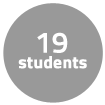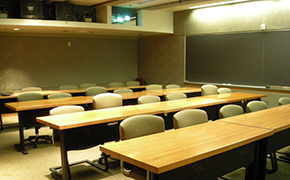Instructor Insights pages are part of the OCW Educator initiative, which seeks to enhance the value of OCW for educators.
Course Overview
This page focuses on the course ESD.S43 Green Supply Chain Management as it was taught by Dr. Edgar Blanco, Dr. Alexis Bateman, and Dr. Anthony Craig in Fall 2014.
This half-semester graduate course in Green Supply Chain Management (ESD.S43) focuses on the fundamental strategies, tools and techniques required to analyze and design environmentally sustainable supply chain systems. Students work on course-long team projects that critically evaluate the environmental supply chain strategy of an industry or a publicly traded company.
Course Outcomes
Course Goals for Students
- Learn about green supply chain management from multiple perspectives.
- Gain an awareness of the different stakeholders involved in green supply chain management.
- Engage in informed conversations about green supply chain management, using the vocabulary and tools central to this domain.
Possibilities for Further Study/Careers
This course was designed to prepare students to embed sustainability practices into whatever professional field they enter. This is important because the only way we will approximate a sustainable relationship with our ecosystem is if everyone embeds it into their everyday lives—be that as architects, engineers, designers, or economists.
One strategy I use for engaging students in classroom discussions is to ask provocative questions.
—Edgar Blanco
Below, Edgar Blanco describes various aspects of how he taught ESD.S43 Green Supply Chain Management.
Collaborating with Invited Speakers
Several class sessions feature invited speakers. These presentations afford students opportunities to ask questions about how the concepts we discuss in class operate in the real world. In general, inviting a guest speaker, who may not be an educator, to address a class is always a high-risk situation.
I address this by only inviting people I have previously seen speak. I also ask them to send me their slides one week before their sessions. I review their slides to make sure they will address the topics I need them to cover. We meet before their sessions for about 30 minutes to run through their slides together. After their presentations, we debrief. I invite them for lunch or coffee and we talk about what worked well in their presentations, and what could be improved.
Providing this kind of support for guest speakers helps ensure that their sessions are successful and that they feel welcomed and valued.
Engaging Students in Classroom Discussions
ESD.S43 is a discussion-based course. One strategy I use for engaging students in classroom discussions is to ask provocative questions. I also make claims that force students to react and to emerge from their comfort zones. For example, in response to a student’s comment, I might say something like, “So what you mean is this...” and then frame his or her comment in an extreme way. This always gets students talking! It stirs up their passions.
It’s also my personality to bring a lot of energy to the classroom: I move my hands, I walk around the classroom, and I look at students very intently when they speak. This makes the discussions personal and engaging.
Addressing the Challenges Students Face in Completing Team Projects
Students have many demands on their time. When they’re working on a team project—like they do in this class—dealing with time constraints and equitably distributing work become even more pronounced challenges. I proactively address this issue by dividing the team project into smaller assignments—such that there is not a big deliverable at the end of the term.
All of the deliverables are things groups should be able to complete in four hours of very productive teamwork. I also never make the deliverable more than two pages or a few slides. I want teams to condense their thoughts and to have something they can all agree on in the timespan of one afternoon.
Of course, before that afternoon, each of them might spend different amounts of time thinking about the assignment, but they know that they are going to come together to create a concrete deliverable that they can commit to completing. So, in some ways, I intentionally restrict the amount of output I expect from them.
I also meet with each team three times each semester to find out how their project is going and how they are collaborating as a team. I specifically consider the depth to which each of the two students is responding to my questions about the project. This helps me gauge if one of the students isn't contributing enough to the team and presents me with an opportunity to preemptively address problems.
If I perceive problems, I reach out to the team members separately. I also make it a point to direct questions during presentations to the student who is not contributing sufficiently.
I try to make it clear that students should come to me if they’re having problems in their teams. I also am very open with them about the fact that conflict within teams is normal and is something we can address.
Developing the Case Studies
Students examine case studies in this class. These case studies reflect over five years of research completed here at the MIT Center for Transportation & Logistics. As part of this research, we worked with many companies. I had the opportunity to meet with leaders from these companies who were trying to implement sustainability initiatives. I learned first-hand about the struggles they encountered in this area.
I built the case studies—and the course—around these technical, strategical, and tactical challenges. Our hope is that the case studies will expose students to the dilemmas they will encounter in their professional environments.
Rewards for Educators
Courses like this one require a lot of time and effort on the part of the instructor. But it’s worth it! I’m always surprised and delighted by the insights students bring to the discussions. Even if I were to teach this class three years in a row, I would gain new perspectives during each offering.
I also benefit professionally from teaching this course, because students’ team projects inform my research. They study a sector in industry deeply and present their findings to the class. I learn what’s going on in these industries from these presentations. It helps to keep my understanding current. Sometimes students bring expertise in a certain area that expands my understanding of the field. As an instructor, I not only give to them, but they teach me, as well. This is one reason I continue to teach the course.
Improving the Course
There are two important changes that are going to happen in this class. One is that I am writing a book that will become the textbook for the course. The other involves rethinking the team project.
I am considering having all the students examine one company—or perhaps different companies, but within one sector. I’m also considering providing students with a choice between two sectors, such as consumer apparel and oil. I’m considering these changes because over time I’ve noticed that companies move at different speeds when it comes to sustainability. Some companies offer bigger opportunities for learning. I want students to spend more time thinking about these particular companies. I want to make sure a good mix of companies that are making great strides and those that are moving more slowly are both represented in the class.
Curriculum Information
Prerequisites
Permission of instructor. Graduate level courses in operations management, logistics design and/or supply chain management preferred.
Requirements Satisfied
ESD.S43 can be applied toward a MIT Sloan School of Management Sustainability Certificate.
Offered
Every fall and spring semester.
Assessment
The students' grades were based on the following activities:
 50% Team project (critical analysis paper)
50% Team project (critical analysis paper) 15% Team project (final presentation)
15% Team project (final presentation) 20% Case study and assignments
20% Case study and assignments 15% Class participation
15% Class participationStudent Information

Breakdown by Year
Mostly graduate students, with a few seniors.
Breakdown by Major
1/3 urban planning, 1/3 engineering, 1/3 management .
Typical Student Background
Approximately half of the students enter the course already having a business idea they want to explore or a job they know will require an understanding of sustainability. They often come with a vision of what they think they want to do.
Ideal Class Size
The ideal class size is 20-30 students. With this number of students, all students can have a chance to speak, present, and engage in discussion. It’s also a large enough number of students to lend the conversations a diversity of perspectives. Fewer than 15 students, and you begin to lose discussion richness.
During an average week, students were expected to spend 6 hours on the course, roughly divided as follows:
In Class
- Met 2 times per week for 1.5 hours per session; 13 sessions total
- 1/3 of the class sessions were dedicated to in-depth discussions about course readings
- 1/3 of the class sessions featured guest speakers from academia and industry
- 1/3 of the class sessions were reserved for intermittent presentations of students’ team project findings; students made these presentations approximately every 2 weeks.
Out of Class
Students completed course readings, prepared presentations, and worked on their critical analysis papers.
Semester Breakdown
| WEEK | M | T | W | Th | F |
|---|---|---|---|---|---|
| 1 |  |  |  |  |  |
| 2 |  |  |  |  |  |
| 3 |  |  |  |  |  |
| 4 |  |  |  |  |  |
| 5 |  |  |  |  |  |
| 6 |  |  |  |  |  |
| 7 |  |  |  |  |  |
| 8 |  |  |  |  |  |
| 9 |  |  |  |  |  |
| 10 |  |  |  |  |  |
| 11 |  |  |  |  |  |
| 12 |  |  |  |  |  |
| 13 |  |  |  |  |  |
| 14 |  |  |  |  |  |
| 15 |  |  |  |  |  |
| 16 |  |  |  |  |  |
 No classes throughout MIT
No classes throughout MIT Class session
Class session Final student presentations
Final student presentations No class session scheduled
No class session scheduled Guest speaker
Guest speaker Assignment due date
Assignment due date


 Room 1 of 1
Room 1 of 1 